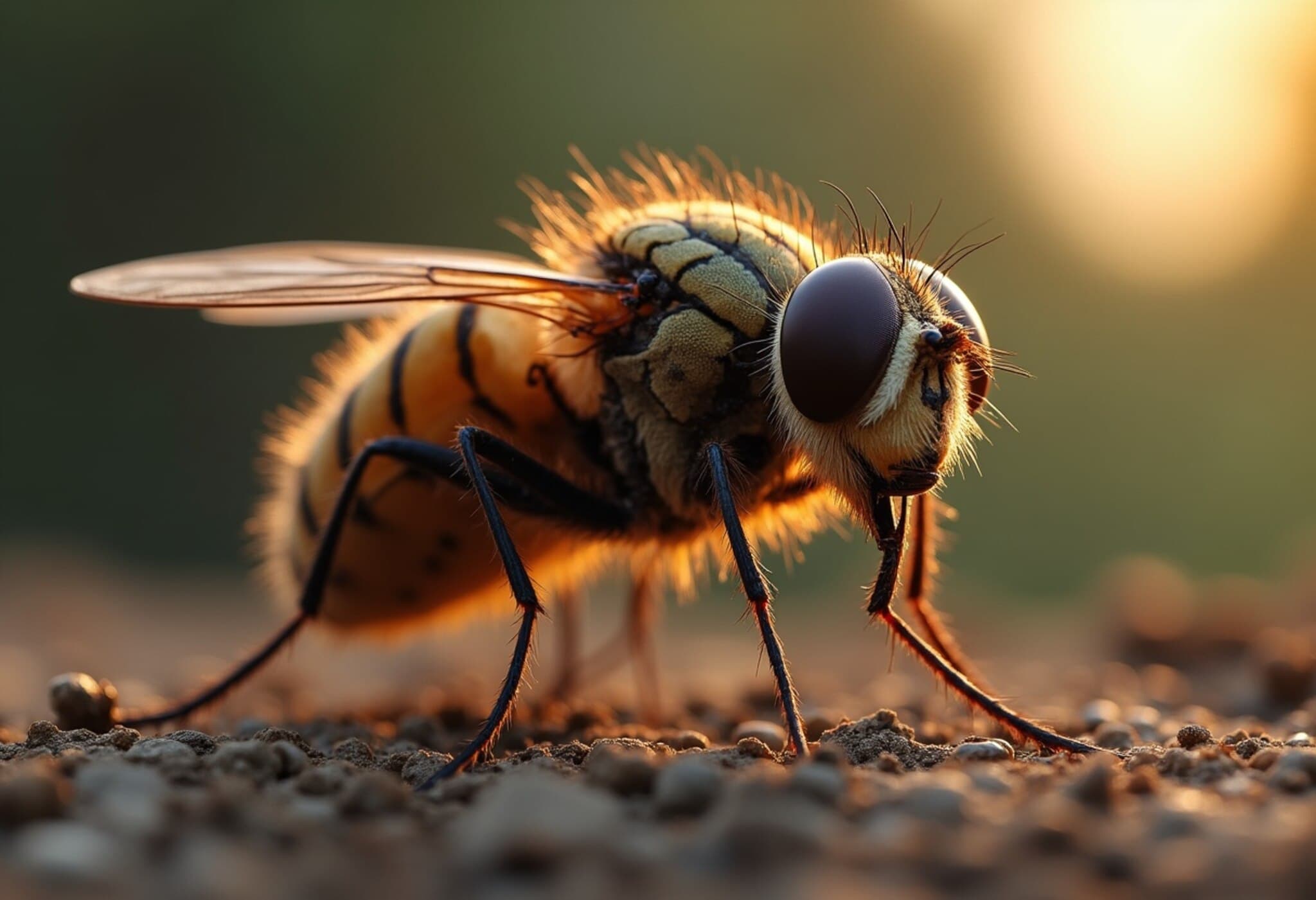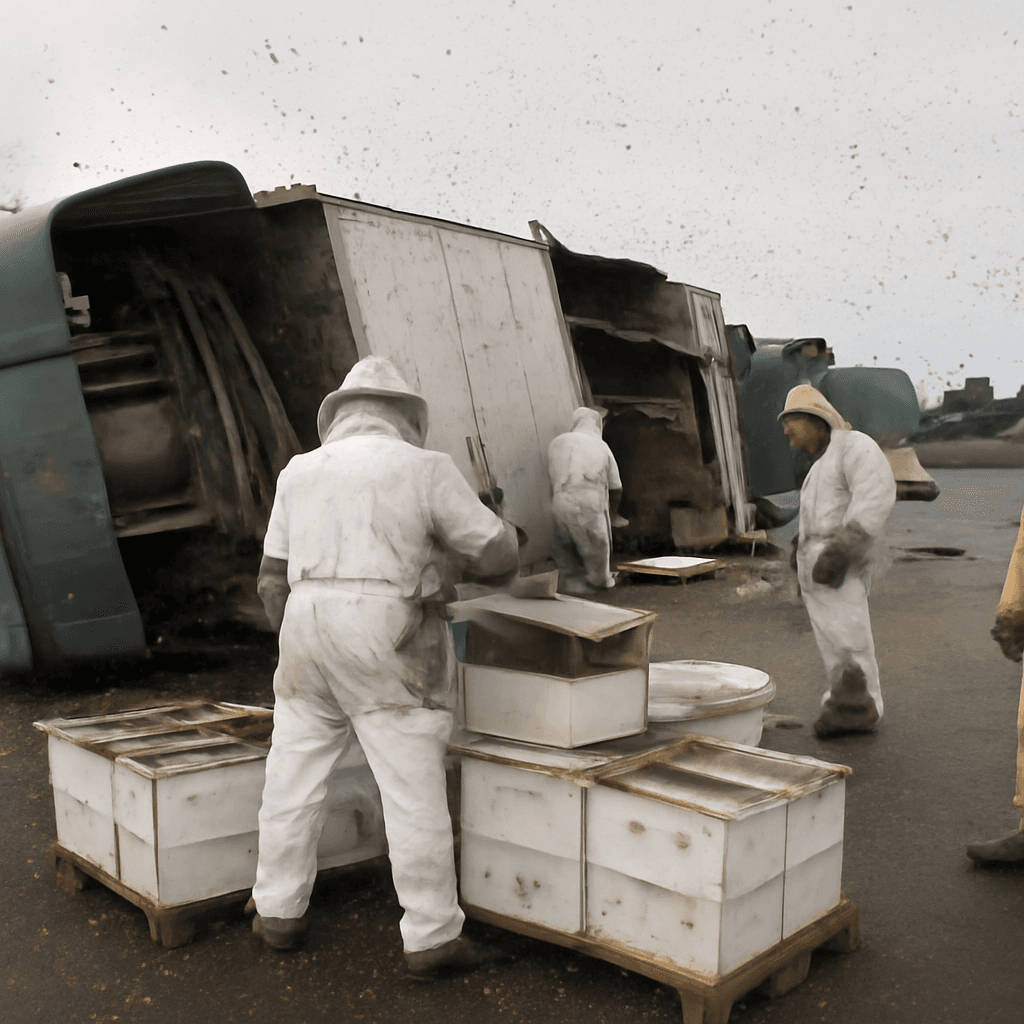US Adopts Innovative Biological Control to Tackle Screwworm Crisis
In an extraordinary fusion of biology and technology, US agricultural authorities are gearing up to release hundreds of millions of sterile flies into the environment as a strategy to halt the advance of the New World screwworm, a destructive parasitic larva threatening livestock across the southern border states.
The Growing Screwworm Menace
Unlike typical maggots feasting on decay, the New World screwworm (Cochliomyia hominivorax) larvae are infamous for attacking living tissue. They invade wounds of warm-blooded animals—cattle, wildlife, pets, and even humans—causing severe tissue damage that can be fatal if untreated.
Since early 2023, the screwworm has rapidly proliferated through Central America, recently crossing into Mexico and threatening the United States’ livestock industry, which is a cornerstone of the nation’s rural economy. According to data from the Panama–US Commission for the Eradication and Prevention of Screwworm (COPEG), over 35,000 infestations have been reported, predominantly in cattle.
Mass Sterilization: Fighting Flies with Flies
Experts are employing the sterile insect technique (SIT), a proven biological control method that was instrumental in eradicating screwworms from the US decades ago. At specialized breeding centers, screwworm pupae are irradiated with gamma rays, sterilizing male flies without impairing their ability to mate.
“The females mate only once in their lifetime, so releasing sterile males drastically reduces the number of fertile eggs laid,” explains Dr. Phillip Kaufman, Chair of Entomology at Texas A&M University.
These sterile males released from low-flying planes compete with fertile wild males, leading to a rapid decline of the screwworm population. The biological tactic is environmentally friendly, avoiding pesticides and preserving ecosystem balance.
Scaling Up: A New Fly Factory at the Texas-Mexico Border
Currently, the world’s only sterile screwworm production facility operates in Panama. However, with the threat moving northward, the US Department of Agriculture (USDA) has fast-tracked plans to construct a state-of-the-art “fly factory” near the Texas-Mexico border, likely at Moore Air Base in Hidalgo County.
This initiative involves an estimated investment of $300 million to build and operate the factory, with $21 million additionally earmarked to upgrade an older Mexican facility by late 2025. Together, these efforts aim to produce sufficient sterile male flies for widescale releases to protect millions of acres of grazing lands.
Implications for Ranchers and the Agricultural Economy
Ranchers in affected states face substantial challenges, as there are currently no vaccines or effective repellents against screwworm infestations. Authorities advise avoiding branding or tagging animals during warm months to mitigate risks.
The screwworm invasion threatens not only animal health but also economic stability in rural America. The livestock sector contributes over $100 billion annually to the US economy. Unchecked pest outbreaks can trigger severe financial losses, spurring higher meat prices and supply chain disruptions affecting consumers nationwide.
Looking Ahead: Lessons from a Successful Eradication Effort
Historically, the US eradicated the screwworm by the early 1960s through the SIT strategy combined with stringent animal inspection protocols. The resurgence today underscores vulnerabilities wrought by climate change, cross-border trade, and evolving pest dynamics.
Experts emphasize the urgency of sustaining investment in environmentally sound pest controls and international cooperation. As Dr. Kaufman highlights, “Reviving SIT efforts at scale safeguards our agricultural heritage and illustrates how science can overcome ecological challenges.”
Beyond the Immediate Crisis: Broader Environmental and Policy Context
- Biocontrol Advantages: SIT avoids the drawbacks of chemical pesticides, such as resistance buildup and non-target species harm.
- Cross-border Coordination: The screwworm's spread illustrates the critical need for shared pest management strategies between the US, Mexico, and Central America.
- Economic Stakes: Livestock losses can ripple through regional economies, highlighting the need for preemptive measures.
- Emerging Threats: Warming climates may expand the pest’s habitat, requiring vigilant monitoring and adaptable responses.



















